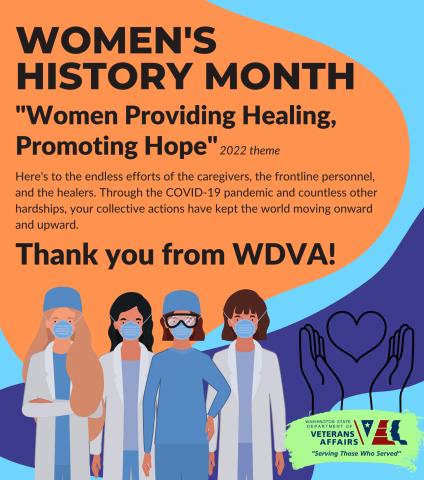
On March 8, the world celebrates International Women’s Day, a celebration that begin in 1911 to call notice to the economic, political, and social achievements of women around the globe. While we continue to observe that celebration individually, Women’s History Month has grown around it, expanding into the entirety of March and recognized by the United State Congress since 1987.
This year’s theme is “Women providing healing, promoting hope” and pays homage to the role of the healers and caregivers of the world. In addition to respecting the frontline fighters of the COVID-19 pandemic, the theme also serves as a recognition of the myriad fashions in which women of all cultures have filled these roles and brought hope to their peoples. The National Women’s History Alliance says “Women has also historically led the way in mending divisions, healing wounds, and finding peaceful solutions. This timeless work, in so many ways in addition to so many other tasks, has helped countless individuals in our communities recover and follow their dreams.”
Perhaps one of the most famous female veterans in history was Harriet Tubman. Tubman acted as a cook, spy, and nurse for the Union during the Civil War, and directed the only female-headed military operation of the war when she led a raid on plantations along the Combahee River in South Carolina. The mission freed around 750 slaves and suffered no casualties in the attack.
Less well-known was Sarah Emma Edmonds, one of the few women to have served during the Civil War. She joined the 2nd Michigan Infantry under the male alias Franklin Flint Thompson as a field nurse and dealt with horrific mass casualties of Second Manassas and Antietam. After leaving the military, Edmonds went on to serve as a nurse at a soldiers’ hospital in Washington, DC.
Over the course of World War II, around 350,000 women served in the US military. Several female-focused service organizations were established during WWII and contributed to the war efforts: the Women’s Army Corps, the Navy’s WAVES (Women Accepted for Volunteer Emergency Service), the Marine Corps Women’s Reserve, the Coast Guard Women’s Reserve (SPARS, taken from Semper Paratus – Always Ready), and the WASPS (Women Air Force Service Pilots). In 1970, Anna Mae Hays was the first woman to be promoted to a General Officer rank when she was made a Brigadier General as head of the Army Nurse Corps. Rear Admiral Alene B. Duerk, head of the Navy Nurse Corps, was made the first female admiral in 1972, and that same year E. Ann Hoefly became Brigadier General in the Air Force Nurse Corps.
According to the Federal VA, in 2019 there were just shy of two million female veterans, accounting for about 10 percent of the veteran population. In the next two decades, that percentage is expected to rise significantly.

